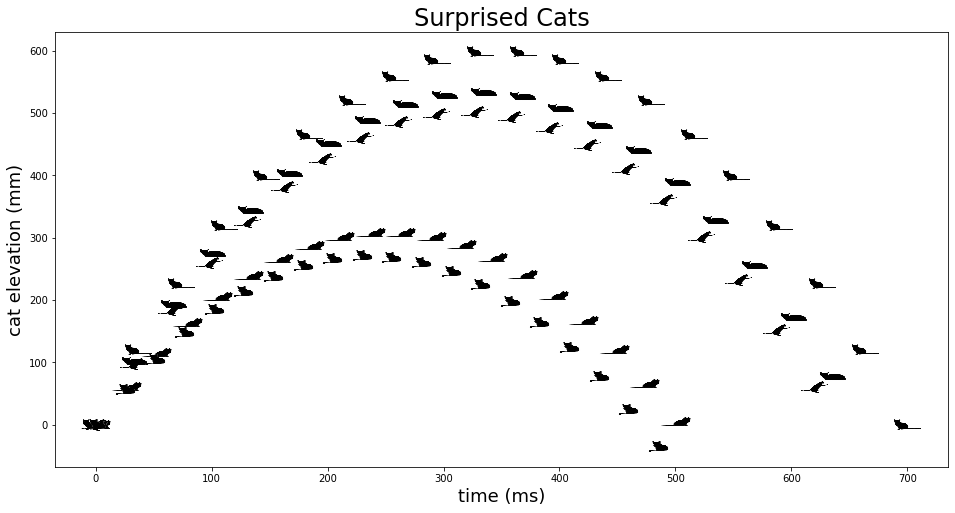Terra’s core mission is to enable the next generation of collaborative biomedical research by connecting researchers to each other and to the datasets and tools they need to achieve scientific breakthroughs. We are proud to support some truly extraordinary research studies that promise to transform the future of global health.
Today it is my honor to introduce a study that has nothing to do with any of that.
I have received an advance preview of a manuscript by my Terran colleague Nicole Deflaux, software engineer and data scientist at Verily, who has in the past authored some extremely useful resources for doing data science in Terra, ranging from the Notebooks Playground to a site selection tool for vaccine trials.
In this latest project, Nicole carried out a totally rigorous analysis of the trajectory of startled cats, based on a highly respected data source, i.e. this compilation of cat videos on YouTube. Crucially, she used the CatterPlots package by David L Gibbs to generate figures, with results that border on cat-ception.


The analysis is well documented and fully reproducible in Jupyter notebook form, and you know this is a community-oriented project because there is both a Python version and an R version.
You can also enjoy these notebooks in a public Terra workspace.
Reactions from individuals polled anonymously on bioinformatics twitter and reddit include “I enjoyed reviewing the original data sources“, “I would have used deep learning”, and “Why isn’t this written in Rust?”.
Cat enthusiasts will undoubtedly be looking forward to the study’s planned follow-up, which will investigate the impact of air resistance and breed fluffiness in determining feline trajectories, and also something about terminal velocity. We wish Nicole all the best with the IRB paperwork.








